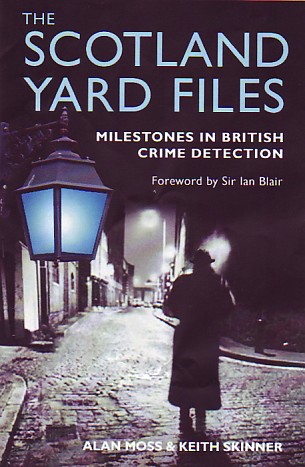| Throat cutting attended the
murders of Nichols, Chapman, Stride, Eddowes, Kelly, McKenzie and Coles. In
all except the cases of Stride and Mylett there was abdominal mutilation. In
the case of Chapman the uterus was taken away by the killer;
Eddowes' uterus and left kidney were taken; and in Kelly's case, evidence
suggests, the heart. The murder of Mary Kelly, in November 1888, was
accompanied by mutilation of such ferocity that it beggared description,
and, for once, left the press short of superlatives. The murder had been
committed on the day of the investiture of the new Mayor of London and the
celebrations were soon overshadowed by the news of the Ripper's latest
atrocity.
The murders were considered too complex for the local Whitechapel (H)
Division C.I.D, headed by Detective Inspector Edmund Reid, to handle alone.
Assistance was sent from the Central Office at Scotland Yard, after the
Nichols murder, in the persons of Detective Inspectors, Frederick George
Abberline, Henry Moore, and Walter Andrews, together with a team of
subordinate officers. Reinforcements were drafted into the area
to supplement the local men. After the Eddowes murder the City Police, under
Detective Inspector James McWilliam, were also engaged on the hunt for the
killer.
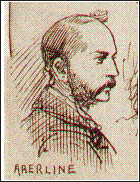
Every one of these murders remained unsolved. No person was
ever convicted of any of them.
Back to top
Non-Ripper murders
Certainly the evidence indicates that Smith was murdered by a group of
three young hoodlums. The police investigated a suspicion that Tabram was
murdered by a soldier. Mylett, who was not even murdered according to
Assistant Commissioner Robert Anderson, was probably strangled by a client.
McKenzie's wounds indicated yet a different killer. The 'Pinchin
Street torso' was undoubtedly an exercise in the disposal of a body, and
Coles was possibly murdered by a male companion, James Thomas Sadler, who
was arrested and, certainly for a while, suspected of being the Ripper.
The name Jack the Ripper is easy to explain. It was
written at the end of a letter, dated 25 September, 1888, and received by
the Central News Agency on 27 September, 1888. They, in turn, forwarded it
to the Metropolitan Police on 29 September.
The letter was couched in lurid prose and began "Dear Boss......" It went
on to speak of "That joke about Leather Apron gave me real fits......''
('Leather Apron' was a John Pizer, briefly suspected at the time of the
Chapman murder). "I am down on whores and I shan't quit ripping
them till I do get buckled..."; and so on in a similar vein. The
appended "trade name" of Jack the Ripper was then made public and further
excited the imagination of the populace.
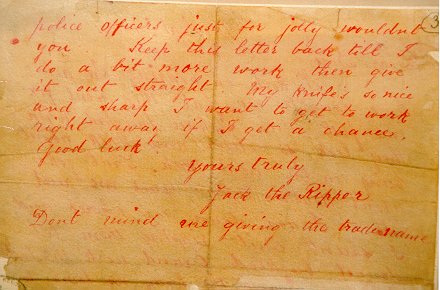
The two murders of 30 September 1888 gave the letter greater importance
and to underline it the unknown correspondent again committed red ink to
postcard and posted it on 1 October. In this communication he referred to
himself as 'saucy Jacky...' and spoke of the "double event......." He again
signed off as Jack the Ripper. The status of this correspondence is still
being discussed by modern historians.
Back to top
The message on the wall
Immediately after the Eddowes murder a piece of her bloodstained apron
was found in a doorway in Goulston Street, Whitechapel. Above the piece of
apron, on the brick fascia in the doorway, was the legend, in chalk, "The
Juwes are The men that Will not be Blamed for nothing." A message from
the murderer, or simply anti-Semitic graffiti? Expert opinion is
divided.
Press Coverage
It was at this time that the panic was at its height and the notoriety of
the murders was becoming truly international, appearing in newspapers from
Europe to the Americas. Even at this early stage the newspapers were
carrying theories as to the identity of the killer, including doctors,
slaughterers, sailors, and lunatics of every description.
A popular image of the killer as a 'shabby genteel' man in dark clothing,
slouch hat and carrying a shiny black bag was also beginning to gain
currency. The press, especially the nascent tabloid papers, were having a
field day. With no Whitechapel murders in October there was still plenty to
write about. There were dozens of arrests of suspects "on suspicion"
(usually followed by quick release); there was a police house-to-house
search, handbills were circulated, and Vigilance Committee members and
private detectives flooded the streets.
The discovery of a female torso in the cellars of the new police
headquarters under construction at Whitehall (the Norman Shaw building)
added to the air of horror on 2 October, 1888. The floodgates to a deluge of
copy cat 'Jack the Ripper' letters were opened, and added to the problems of
the police.
An unpleasant experience befell the Chairman of the Whitechapel Vigilance
Committee, builder George Lusk, on 16 October, 1888, when he received half a
human kidney in a cardboard box through the post. With this
gruesome object was a letter scrawled in a spidery band and addressed "from
Hell ....." It finished. "signed Catch me when you can Mishter Lusk."
The writer claimed to have fried and ate the other half of the "kidne,"
which was "very nise." The shaken Lusk took both kidney and letter to
the police. The police, and police surgeon felt it was probably a hoax by a
medical student, although others believed it was part of Eddowes' missing
organ.
Back to top
Well-attended and lengthy inquests were held by Coroner Wynne Baxter on
the majority of the victims. By the time the murders came to an
end in 1891, the proprietors of the Working Lads' Institute had had enough
of the noisy, unruly, proceedings and informed Baxter that he should find a
different venue for his next inquest.
The Metropolitan Commissioner of Police, Sir Charles Warren, resigned at
the time of the Kelly murder, after a long history of dispute with the Home
Office, and was replaced by James Monro.
The panic subsides
After the Kelly murder, and many more abortive arrests, the panic began
to die down a little and a more quiescent atmosphere began to reign.
In early 1889 lnspector Abberline left, to take on other cases, and the
inquiry was handed over to Inspector Henry Moore. His last
extant report on the murders is dated 1896, when another 'Jack the Ripper'
letter was received. There were brief flurries of press activity
and wild suggestions that the 'Ripper' had returned on the occasions of the
subsequent murders. However, Sadler was the last serious suspect arrested,
and his seafaring activities obviated him from blame for the 1888 murders.
A number of relevant files and documents are available in the National
Archives at Ruskin Avenue, Kew.
|
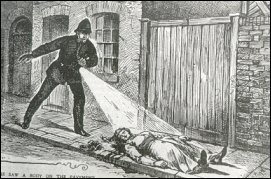
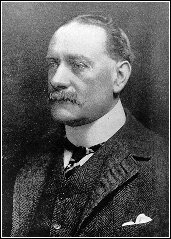 The
first three of these suspects were nominated by Sir Melville Macnaghten,
second in command of the Criminal Investigation Department (C.I.D.) at
Scotland Yard in June 1889. They were named in a report dated 23 February
1894, although there is no evidence of contemporary police suspicion
against the three at the time of the murders. Indeed, Macnaghten's report
contains several odd factual errors.
The
first three of these suspects were nominated by Sir Melville Macnaghten,
second in command of the Criminal Investigation Department (C.I.D.) at
Scotland Yard in June 1889. They were named in a report dated 23 February
1894, although there is no evidence of contemporary police suspicion
against the three at the time of the murders. Indeed, Macnaghten's report
contains several odd factual errors.

